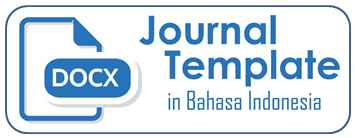Penggunaan Terapi Komplementer pada Orang dengan Lupus di Sumatera Selatan
DOI:
https://doi.org/10.32524/jksp.v6i1.821Kata Kunci:
Adult, Hydrocortisone, FemaleAbstrak
specific parts and in general, which are called Lupus Erythematosus Systems. Research on the use of complementary therapies in Odapus is still limited. The purpose of this study was to determine the type of complementary therapy used by Odapus in South Sumatra. Descriptive research design, at the South Sumatra Lupus Association, total sampling. The results are as follows for the characteristics of respondents: by 96% of women, 88% of adults, and 68% used Complementary therapies. This study used seven types of complementary therapy, but the most used for Odapus were only three types, namely exercise therapy in the form of walking and cycling, which are physical activities that can improve blood flow and reduce cytokines that can trigger inflammation. Sholat and Do’a, two types of spiritual therapy, provide psychological peace so that the body relaxes, Odapus is not stressed, and does not release corticosteroid hormones to prevent recurrence. The three traditional medical therapies are in the form of using herbs, which must be communicated with health workers because some herbs are immunostimulatory, so Odapus cannot be consumed, and there are herbs that have anti-inflammatory properties. In conclusion, most Odapus in South Sumatra use complementary therapy. The type of complementary therapy that is widely used is exercise therapy in the form of walking and cycling, spiritual therapy with prayer, and traditional healing therapy using herbs.
Referensi
A’la, M. A. Z. N. (2017). Penerapan Shalat Tahajud terhadap Penderita Stroke di Klinik Rumah Sehat Avicenna, Desa Tempurejo Kecamatan Pesantren Kota Kediri’, Spiritualita, 1(1), pp. 55–67. doi: 10.30762/spr.v1i1.641.
Akil, N. (2023). LUPUS, Penyakit Seribu Wajah, Perhimpunan Reumatologi Indonesia. Available at: https://reumatologi.or.id/lupus-penyakit-seribu-wajah/ (Accessed: 19 February 2023).
Chakka, S. et al. (2021). The effects of immunostimulatory herbal supplements on autoimmune skin diseases’, J Am Acad Dermatol, 84(4), pp. 1051–1058. doi: 10.1016/j.jaad.2020.06.037.The.
Cozier C., Y. et al. (2019). A Prospective Study of Obesity and Risk of Systemic Lupus Erythematosus (SLE) among Black Women’, Semin Arthritis Rheum., 48(6), pp. 1030–1034. doi: 10.1016/j.semarthrit.2018.10.004.A.
Dinkes Sarolangun. (2019). Pemanfaatan Pengobatan Tradisional, Dinkes Sarolangun. Available at: https://dinkes.sarolangunkab.go.id/berita-pemanfaatan-pengobatan-tradisional.html (Accessed: 19 February 2023).
Dpppa. (2022). Perbedaan Jenis Kelamin dan Gender. Available at: https://dpppa.kotabogor.go.id/index.php/welcome/post/single/113 (Accessed: 19 February 2023).
Dyussenbayev, A. (2017). Periods of Human Life’, Advances in Social Sciences Research Journal, 4(6), pp. 258–263. doi: 10.14738/assrj.46.2924.
Hashemi, S. et al. (2022). Effects of combined aerobic and anaerobic exercise training on cytokine profiles in patients with systemic lupus erythematosus (SLE); a randomized controlled trial’, Transplant Immunology, 70. doi: 10.1016/j.trim.2021.101516.
Kasjmir, Y. I. et al. (2011). Rekomendasi Perhimpunan Reumatologi Indonesia untuk Diagnosis dan Pengelolaan Lupus Eritematosus, Perhimpunan Reumatologi Indonesia. Perhimpunan Rematologi Indonesia. Available at: https://reumatologi.or.id/wp-content/uploads/2020/10/Rekomendasi_Lupus_Eritematosus_Sistemik_2011.pdf.
Lu, M. et al. (2022). Association of Clinical Manifestations of Systemic Lupus Erythematosus and Complementary Therapy Use in Taiwanese Female Patients?: A Cross-Sectional Study’, pp. 1–10.
Lu, M. C. et al. (2021). Factors associated with the use of complementary therapies in Taiwanese patients with systemic lupus erythematosus: a cross-sectional study’, BMC Complementary Medicine and Therapies, 21(1), pp. 1–15. doi: 10.1186/s12906-021-03416-w.
Morgan, C. et al. (2018). Individuals living with lupus: findings from the LUPUS UK Members Survey 2014’, Lupus, 27(4), pp. 681–687. doi: 10.1177/0961203317749746.
Nowak, A. et al. (2021). Advanced glycation end-products (Ages) and their soluble receptor (srage) in women suffering from systemic lupus erythematosus (sle)’, Cells, 10(12). doi: 10.3390/cells10123523.
Nurudhin, A. (2020). Clinical Approach ti Diagnosis Systemic Lupus Erithematosus’. Indonesia. Available at: https://www.youtube.com/watch?v=8sZQAvSksIk&t=6943s.
Probosuseno. (2022). Dukungan Spiritual bagi Pasien dalam Perawatan Paliatif’, PKMK FK-KMK UGM. Indonesia. Available at: https://www.youtube.com/watch?v=fVrwQxA5M08 (Accessed: 19 February 2023).
Rengganis, I. (2021). Diagnosis SLE’. indonesia. Available at: https://www.youtube.com/watch?v=tcfzw_-hxw8.
Vaillant, A. A., Goyal, J. and Varacallo, M. (2022). Systemic Lupus Erythematosus. In: StatPearls [Internet] Treasure Island (FL): StatPearls Publishing. Available at: https://www.ncbi.nlm.nih.gov/books/NBK535405/#article-24526.s5.
Waldheim, E. (2022). When systemic lupus erythematosus (SLE) involves pain: Occurrence and impact on daily life, Dissertation Abstracts International: Section B: The Sciences and Engineering. Available at: https://www.proquest.com/dissertations-theses/when-systemic-lupus-erythematosus-sle-involves/docview/2616588646/se2?accountid=14744%0Ahttps://cbua-us.primo.exlibrisgroup.com/discovery/openurl?institution=34CBUA_US&vid=34CBUA_US:VU1&lang=es?url_ver=Z39.88.
Xiang, S. et al. (2022). Imbalance of helper T cell type 1, helper T cell type 2 and associated cytokines in patients with systemic lupus erythematosus: A meta-analysis’, Frontiers in Pharmacology, 13(September), pp. 1–17. doi: 10.3389/fphar.2022.988512.
Yuliasih, Y. et al. (2022). The Association of Complements, TGF-?, and IL-6 with Disease Activity, Renal Damage, and Hematological Activity in Patients with Naïve SLE’, International Journal of Inflammation, 2022, pp. 1–7. doi: 10.1155/2022/7168935.
##submission.downloads##
Diterbitkan
Cara Mengutip
Terbitan
Bagian
Lisensi
Hak Cipta (c) 2023 Jurnal Kesehatan Saelmakers PERDANA

Artikel ini berlisensiCreative Commons Attribution-ShareAlike 4.0 International License.












